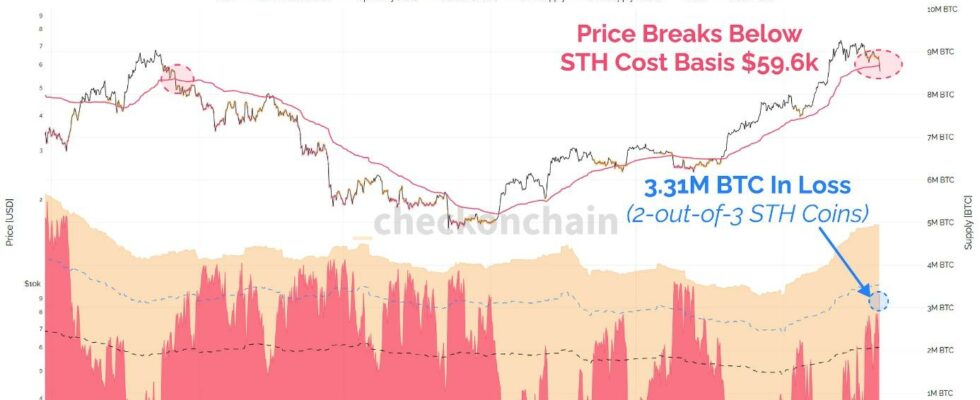“Sell in May and go away” – some Bitcoin holders seem to have taken this well-known financial market motto too seriously. Just at the start of the new month, the Bitcoin price fell below the $60,000 mark.
From a so-called on-chain perspective, this is significant because we have also fallen under the so-called “cost basis” of short-term holders. This refers to the average price at which short-term holders acquired their Bitcoin holdings – i.e. their acquisition costs. As a reminder: Bitcoins are considered to be held by short-term holders if they were last moved within the last 155 days.
2 of 3 short-term holders in loss
Currently, the “cost basis” of short-term holders is approximately $59,600. With the recent price correction below this price, “Mr. Market” has now, to a certain extent, “put a knife on the neck” of short-term holders. They are sitting on losses. To be precise, of the 4.95 million Bitcoin currently held by short-term holders, 3.31 million are in the red. Or to put it another way: 2 out of 3 or over 66% of all short-term holders have slipped into the red.
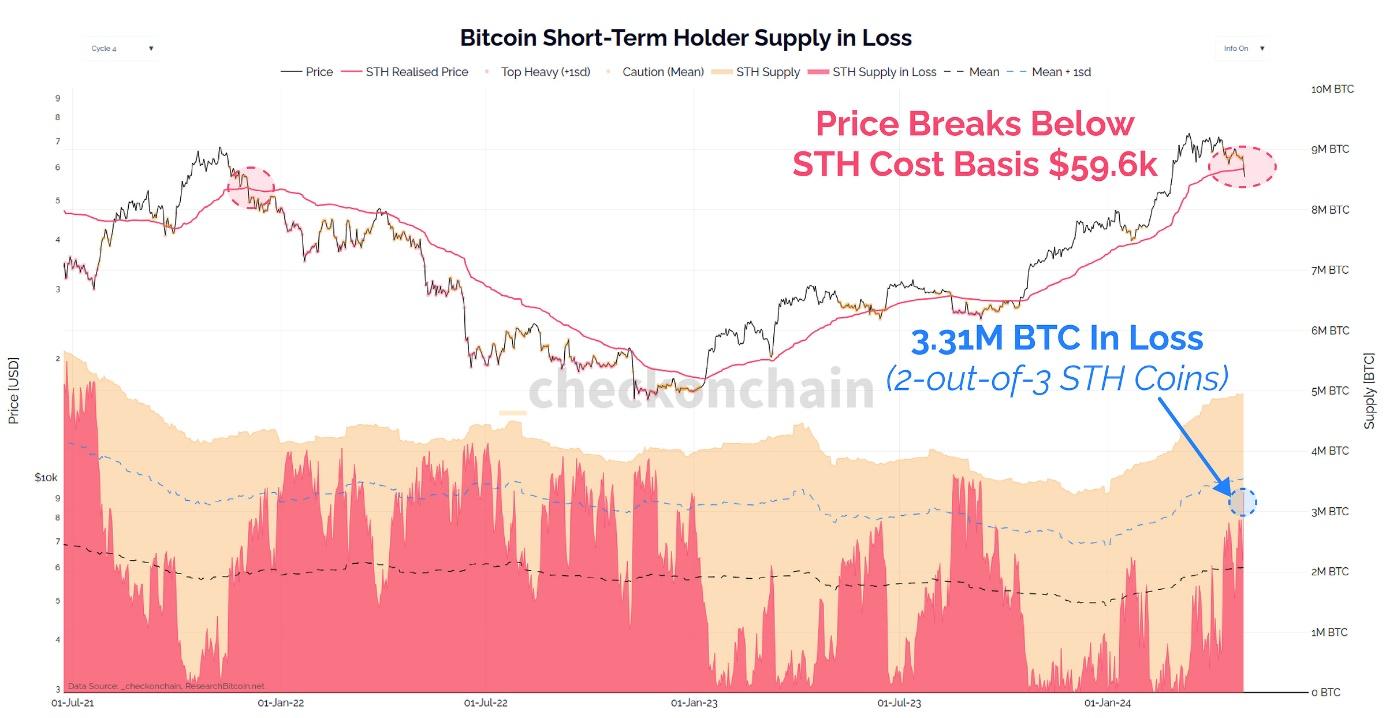
But why should falling below this short-term holder “cost basis” be viewed critically? Statistically speaking, these short-term holders are among the Bitcoin investors most prone to panic selling. There is therefore a “danger” of a possible capitulation by short-term holders, who could throw their Bitcoin onto the market at a loss and thus pull the price further down.
Some short-term holders have already suffered losses realized. The question is: How large is the proportion of so-called “diamond hands” among short-term holders? This will become apparent in the next few days to weeks.
What should be said: Falling below the short-term holder “cost basis” is not the end of the world and not necessarily the end of the current bull market. Basically, it is a positive phenomenon when people who bought at a higher price now sell at a loss, thereby reducing the “cost basis” of these coins to a lower value. Of course, and this is the crux of the matter: Where there is a seller, there must also be a buyer.
Spot Bitcoin is selling more heavily right now
And here things stall a little. It appears that demand for Bitcoin is currently subdued. If short-term holders give up the begging and want to get rid of their Bitcoin as much as possible using a “market sell order” and then too few buyers step into the breach, the price drops.
The chart below shows that spot demand for Bitcoin is currently weak. The sales volume currently exceeds the buying volume by $50 million per day. A completely different picture emerged in March around the all-time high of $73,000: At that time, the buying volume exceeded the selling volume by $100 million per day.
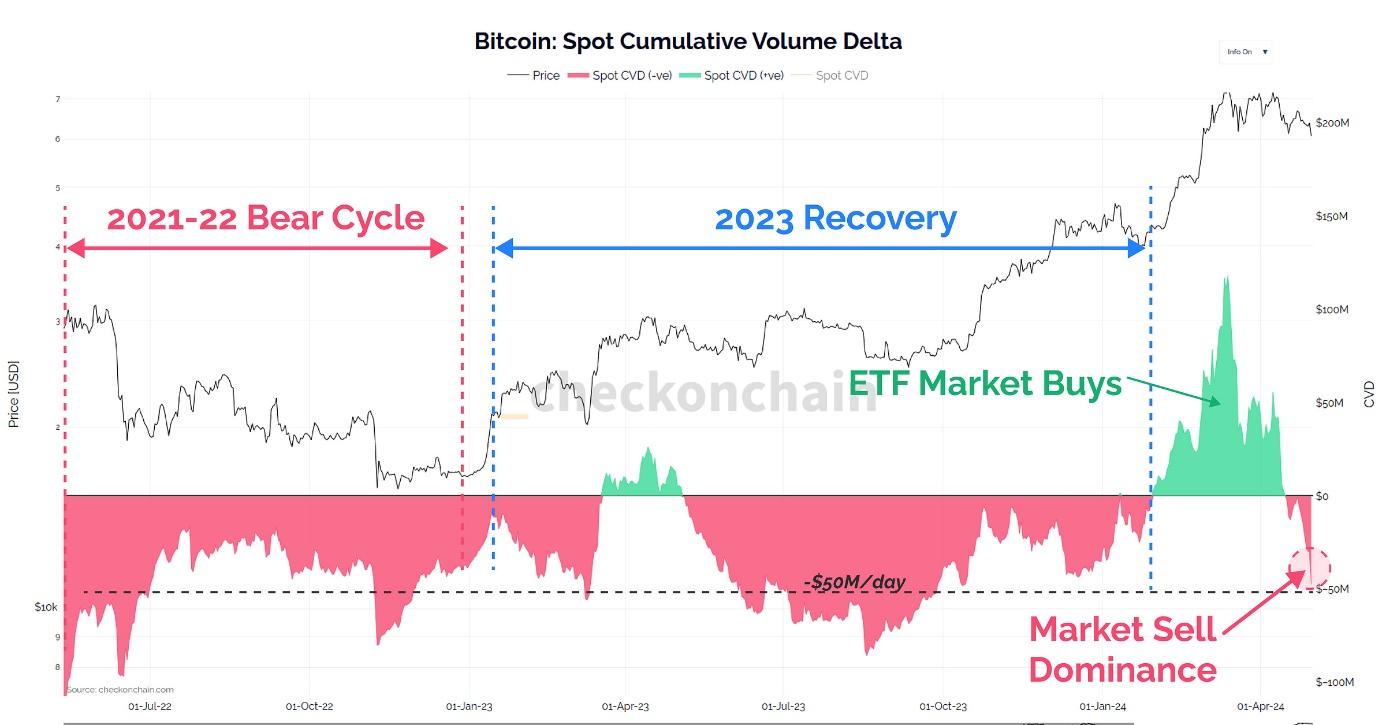

US Bitcoin ETFs falter
In the first quarter of this year, US Bitcoin ETFs were a notable source of demand for Bitcoin. In April, this Bitcoin demand generated by the ETF has now decreased, so that in the last few days more money has flowed out of the ETFs than in.
For the week of April 22 to April 26, US ETFs saw a total net outflow of $328 million. And at the start of May, ETF holders sold shares worth $564 million. It looks like the ETF buyers are not the “Diamond Hands” they were thought to be.
What is interesting is that these sales are not only due to the GBTC ETF, which is already known as a notorious sales vehicle – also the Bitcoin ETF from Fidelity (FBTC), ARK (ARKB) and all the others saw drains. And even BlackRock’s flagship product (IBIT), which was stranded for a few days without any inflows, fell by $37 million.
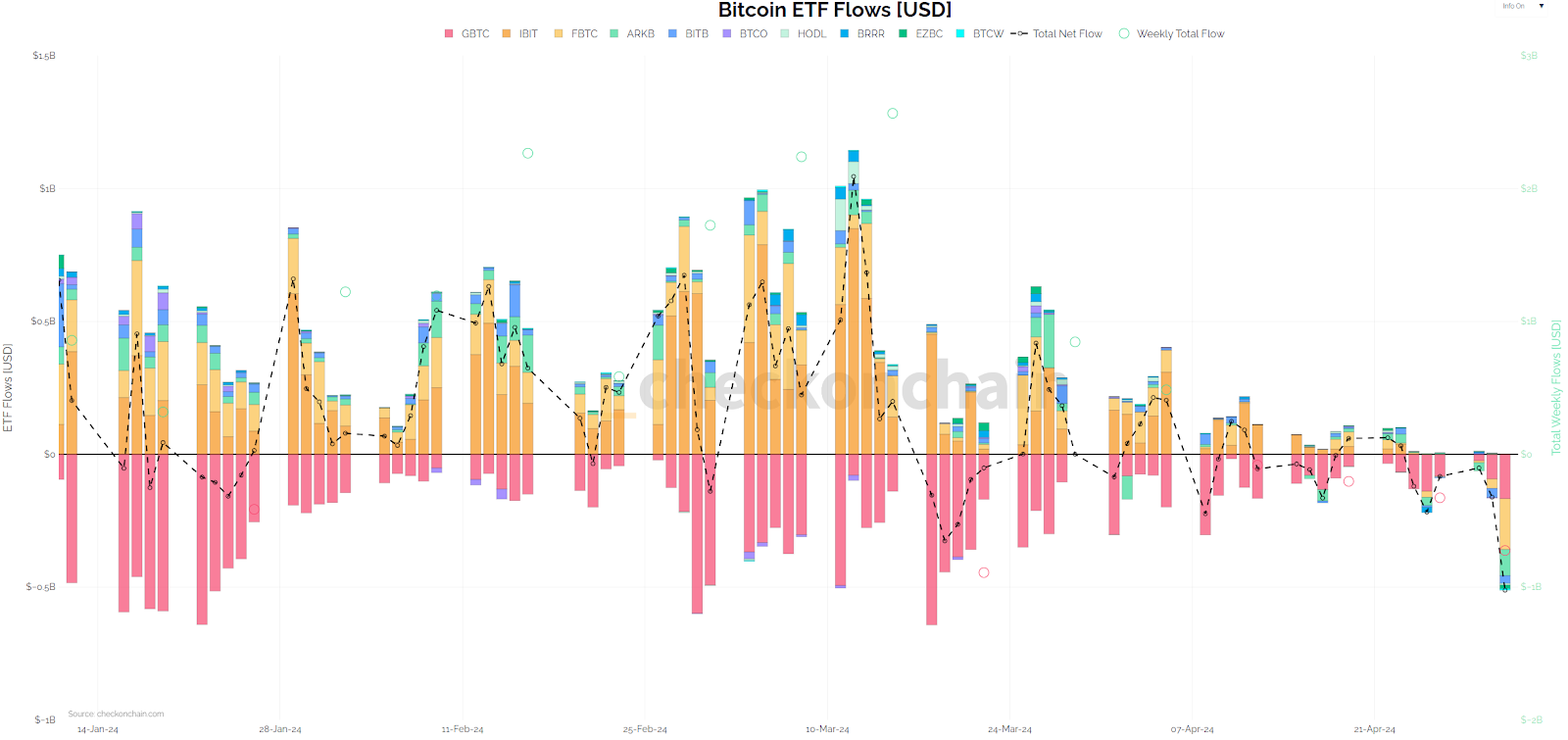

ETFs from Hong Kong: Hardly worth mentioning?
In the wake of the current dwindling interest in US Bitcoin ETFs, media attention has shifted to the ETFs in Hong Kong in recent days. Expectations for the launch were high – with some commentators even predicting that Hong Kong could surpass the US in Bitcoin ETF inflows and volume on the first day. However, these expectations were not met and the Hong Kong ETF debut fell behave out of.
Upon closer inspection, the launch wasn’t quite as disappointing. The Hong Kong ETFs for Bitcoin and Ether only generated a trading volume of around 12 million US dollars. The ChinaAMC Bitcoin ETF was able to bring in at least 123 million US dollars on the first day.
Although these inflow figures can also be attributed to so-called “pre-seeding”, these figures make the product one of the most successful ETF products in Hong Kong in the last three years. It remains to be seen whether the inflows in Asia can compensate for possible progressive outflows in the USA.
Inflation is making a comeback
So what the Bitcoin market needs is the comeback of the “demand regime” like we saw in the first quarter of this year. And there is no doubt that demand, especially from institutional investors, will return. For now, however, it is inflation that is making a comeback and is causing investors to be more cautious about risky investments like Bitcoin.
In the USA, inflation figures are rising slightly again. Although inflation has fallen significantly since its peak of over 9% in the summer of 2022, the US Federal Reserve has still not reached its actual inflation target of 2%.
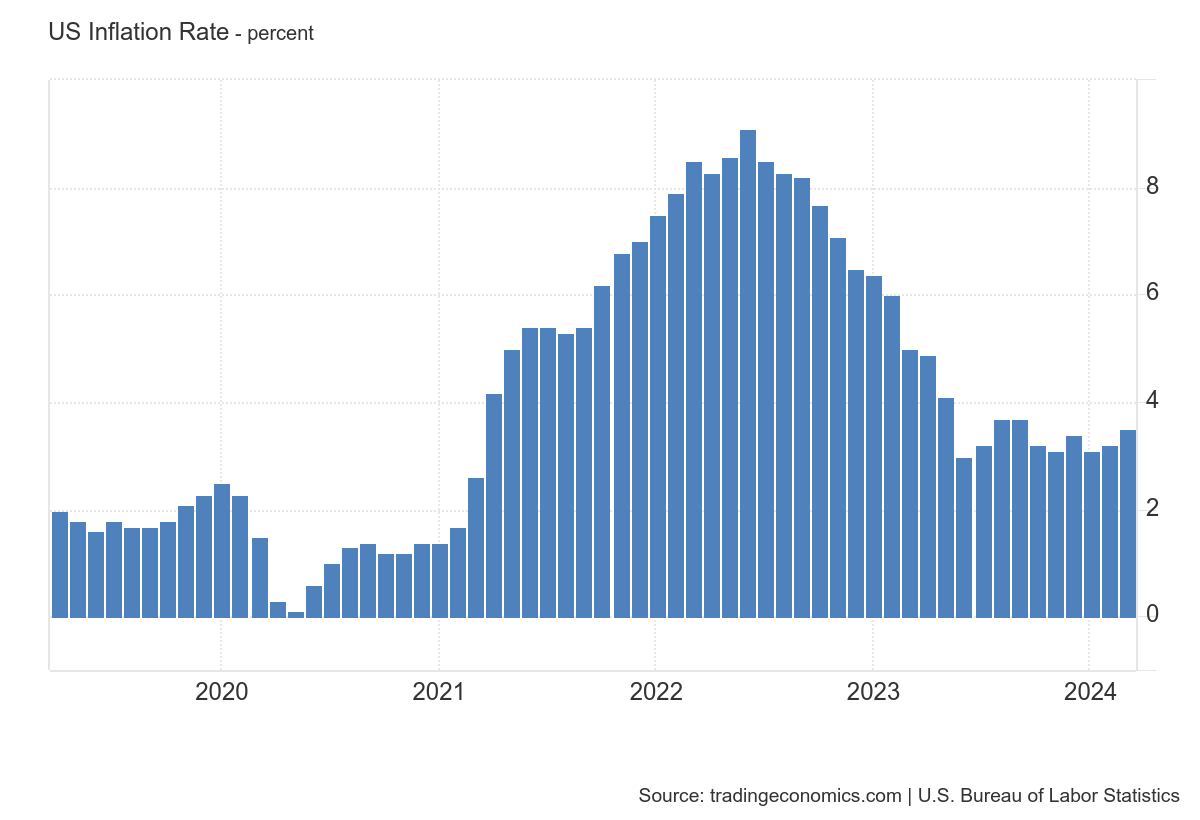

No interest rate cuts in sight
Inflation is likely to remain higher for longer, driven by the US government’s continued high budget deficits. This makes it more likely that interest rates will not fall in the coming months as expected at the beginning of this year due to the renewed rise in inflation.
In January, the market had priced in up to seven interest rate cuts by the end of 2024. Today he has priced out most of the rate cuts for 2024 and currently only expects a rate cut of 25 basis points by December. With a probability of 18% believe The market participants even say that we will not see any interest rate cuts at all this year and will only see them in 2025 come become.
US Federal Reserve wants to reduce its balance sheet less quickly
The fact that the Bitcoin price has fluctuated in the past few days is probably also a reaction to the possible lack of interest rate cuts. After all, the US Federal Reserve announced at the beginning of the month that it wanted to slow down the pace of its balance sheet reduction from June. They no longer want to let 60 billion US dollars expire, but only 25 billion US dollars in US government bonds.


This announcement was viewed as fundamentally bullish by market participants. This is because a slowdown in balance sheet reduction is seen as a precursor to a possible balance sheet expansion – also known in technical language as quantitative easing (QE). The attitude of US Federal Reserve Chairman Jerome Powell during the recent FOMC meeting, which was generally interpreted as “dovish”, has given Bitcoin the opportunity to take a breather.
About the author
Pascal Hügli is a moderator, debater and lecturer at the HWZ. As an analyst for the German-speaking Newsletter Insight DeFi He would like to inform the general public competently and succinctly about the events and opportunities of the new decentralized world of Bitcoin and Co. He is also the author of Ignore at your own risk: The new decentralized world of Bitcoin and blockchain.
This might also interest you
